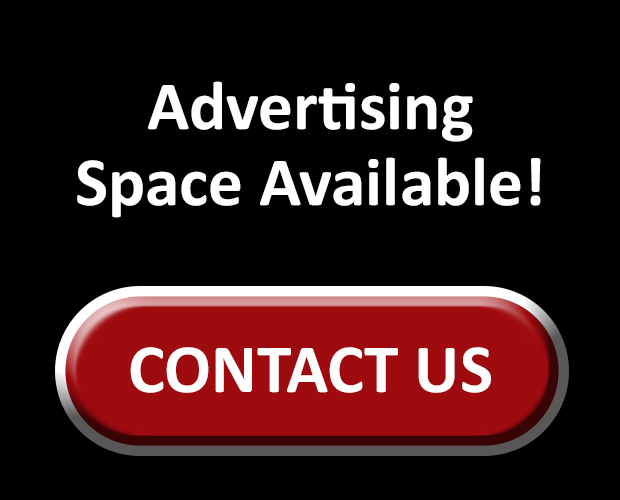 Marketing your coaching business isn’t an afterthought, it’s a designed system that blends authenticity, clarity, and deliberate outreach. In a crowded market, remember that coaching is different: you’re not just selling sessions, you’re inviting someone into a trusting relationship that catalyzes change. Because your offer is intangible, your marketing must make outcomes tangible, share client stories, before-and-after benchmarks, and a clear framework for how you work. Niche your message to a specific client, articulate the problems you solve, and show social proof through testimonials, case studies, and partnerships. Educate with valuable content, offer low-risk entry points (assessments, workshops), and use ethical calls to action that respect readiness. Consistency across platforms builds familiarity; clarity in offers reduces friction; authenticity builds belief. Ultimately, great marketing demonstrates your capacity to guide clients from uncertainty to measurable transformation.
Marketing your coaching business isn’t an afterthought, it’s a designed system that blends authenticity, clarity, and deliberate outreach. In a crowded market, remember that coaching is different: you’re not just selling sessions, you’re inviting someone into a trusting relationship that catalyzes change. Because your offer is intangible, your marketing must make outcomes tangible, share client stories, before-and-after benchmarks, and a clear framework for how you work. Niche your message to a specific client, articulate the problems you solve, and show social proof through testimonials, case studies, and partnerships. Educate with valuable content, offer low-risk entry points (assessments, workshops), and use ethical calls to action that respect readiness. Consistency across platforms builds familiarity; clarity in offers reduces friction; authenticity builds belief. Ultimately, great marketing demonstrates your capacity to guide clients from uncertainty to measurable transformation.
- Define Your Specific Niche Target Customer
When you have a specific niche target customer, they are easier to attract. Instead of saying you help “women,” be specific, e.g., “I help women executives navigate career transitions with confidence.” Clear niches allow your messaging to connect deeply, making prospects feel like you’re speaking directly to them. Clarity creates connection, and connection leads to conversion.
- Craft a Professional Bio
You need a bio that clearly and quickly describe your credentials and who you serve. It is your opportunity to tell your story and demonstrate your results. You should have a 50-word version and a 150-word version. Show people how your journey qualifies you to help them. A good professional bio includes your name, title, who you specialize in coaching, results you deliver and books & publications, any media exposure, education and certifications and a personal detail or two that humanizes you. This helps potential clients relate to and remember you.
- Update Your Professional Headshot
As a coach, it’s critical to invest in high-quality headshots. They convey professionalism and confidence. People want to see the face behind the service, especially in coaching. Choose attire and settings that reflect your brand. Your photos will be used across your website, social platforms, press features, and more, make sure they capture the best version of who you are.
- Build a Strong Personal Brand Online
Your personal brand should reflect your story, values, and mission. When people know what you stand for and why you do what you do, they are more likely to trust and hire you. Be intentional with your tone, imagery, and content. Authentic branding attracts aligned clients who resonate with your approach and personality.
- Create a Website that Converts
Your website should do more than look good, it should convert sales. All offers should have dedicated landing pages. Make it clear who you help, how you assist them, and what they should do next to stay in touch with you (e.g., book a call, download a guide). Include real testimonials, a strong CTA on every page, and utilize a mobile-friendly design. A great site acts as your 24/7 marketing hub.
- Use a Scheduling Tool


You want to make sure people can get on your calendar without too much hassle. Use scheduling tools like Calendly, Acuity, or High Level to reduce friction for potential clients. They can click a link and book time instantly. You can embed these tools into your website, emails, and social bios. These tools automate confirmation emails and be sure to add pre-call questions to qualify leads upfront.
- Create a New Lead Magnet
You should offer a free lead magnet to build your email list. It all starts by giving value first. Choose a topic that addresses one urgent problem your ideal client wants solved today. Keep it simple, actionable, and results-focused, like a checklist, guide, mini course, or template. This starts the trust-building process and gives your audience a taste of your coaching brilliance. You should change your lead magnet every 6 months.
- Use Discovery Calls to Convert Leads
A well-structured discovery call should turn curiosity into commitment. Start by asking about their struggles and goals. Mirror their language so they feel seen and understood. Then position your offer as the bridge between where they are and where they want to go. Handle objections with empathy, not pressure. Always follow up within 48 hours with a second meeting.
- Follow Up Religiously
Your Fortune is in the follow-up. Most leads don’t convert immediately, they need nurturing. Set reminders or use a CRM to follow up with people who attended your webinar, downloaded your lead magnet, or booked a discovery call but didn’t buy. A friendly nudge with added value often turns a “not yet” into a “yes.”
- Build an Email List
Email marketing is one of the most powerful tools in your business. Once people get on your email list it gives you permission to make money, unlike social followers you can contact them at will. Use email to introduce your brand, share tips, personal transformation stories, offers, and lots of inspiration. Keep your content client-centered and engaging. Over time, your email list will become your biggest revenue source.
- Automate Your Email Sales Funnels
Use email automation to welcome new subscribers, deliver your lead magnet, and guide them toward a call or a low-ticket offer of $47-$7. A good email sequence can nurture leads even while you sleep. Include 4–7 emails that provide value, answer objections, and showcase testimonials. Automation ensures your marketing remains consistent without requiring your constant attention.
-

 Be Active on Social Media
Be Active on Social Media
Choose 1 or 2 platforms where your ideal clients already spend time—then show up with value. Focus on consistency over perfection. Mix educational posts with personal stories, behind-the-scenes content, and client wins. Use social media to build familiarity and trust over time. When done right, it’s not just promotion—it’s relationship-building at scale.
- Use Short Form Videos for Engagement
Short-form video is dominating attention spans. Share quick tips, bust myths, or teach one action step your ideal client can take today. Post mini trainings as Reels, TikTok’s, or YouTube Shorts. These videos position you as an expert while delivering bite-sized value that builds authority. Aim for 30–90 seconds per video.
- Record Video Case Studies
Go deeper than a testimonial by sharing the full video story of a client’s transformation. Invite them on Zoom with you, start with where they were before coaching, explain what you worked on together, and end with the measurable results. This video can be used in pitches, ads, and on landing pages. Use this to build credibility, overcome objections, and show potential clients what’s possible when they work with you.
- Leverage Client Testimonials
Let your clients sell for you. When others talk about how you helped them achieve fundamental transformation, it builds social proof and trust. Ask for testimonials right after a win or finishing a coaching contract and include a photo or video testimonial for more impact. Post them to your website, sales pages, and weekly newsletters. Testimonials close deals. Leverage them.
- Go Live as Part of Your Content Strategy
Live video fosters connection and credibility in real-time. Host weekly or monthly livestreams on Instagram, Facebook, LinkedIn, or YouTube. Take questions from the audience, teach something valuable, or share behind-the-scenes insights. Livestreams enable your audience to experience your energy and expertise—two key factors that significantly influence a buying decision in coaching.
- Create an Editorial Calendar
Don’t stress yourself developing content. Make yourself an editorial calendar. Plan your content in advance so it aligns with your goals and launch schedule. A editorial calendar keeps you consistent, reduces stress, and ensures variety. Map out 3–5 content pillars (like blog, podcasts, videos, social media) and rotate through them. Use scheduling tools to automate your posting flow.
- Host a Free Workshop or Webinar
Free workshops provide an opportunity to showcase your value, expertise, and expand your audience. Teach a focused topic that solves a pressing issue your audience has. Promote at least show up with energy, and end with a clear offer with incentives to take action. Workshops and webinars are effective because they establish trust while demonstrating to your audience what’s possible. Consider booking webinars for other audiences to expand your list as well.
- Use Free Consulting Calls to Convert Leads


Design each consulting call to move prospects from curiosity to clarity. Lead with questions about their challenges and goals, then mirror their language so they feel seen. Position your offer as the practical bridge from “where they are” to “where they want to go.” Address objections with empathy, not pressure. Before you hang up, schedule the next step, or follow up within 48 hours to confirm a second meeting.
- Offer Multiple Entry Points
Not everyone is ready for high-ticket coaching. Create a product ladder by offering low-ticket resources (toolkits/mini courses), mid-ticket options (like group coaching), and premium one-on-one coaching packages. This allows prospects to engage at their comfort level while giving you more opportunities to build trust and increase lifetime client value.
- Launch a Signature Framework
A signature coaching framework sets you apart and makes your process easier to explain and sell. Name your method (e.g., “The 12 Ps of Running a Successful Business”) and use it consistently across your website, content, and calls. It gives clients confidence that you have a proven path and makes you more memorable. Frameworks also help streamline your coaching delivery, reinforce your authority, and create a foundation you can license, turn into a course, or scale into group programs. When clients can visualize their journey, they’re more likely to commit to it, and refer others to the same path.
- Collaborate with Others in Your Space
Partnerships are a powerful way to expand your reach. Co-host a live event, guest teach in someone else’s program or offer bundled services with aligned professionals (like graphic designers or virtual assistants). These collaborations expose you to new audiences and build credibility through association, plus they often lead to long-term referral clients. Partnering allows you to borrow influence and trust from someone your audience already respects and trusts. You can also split marketing costs and double your impact. Collaborations aren’t just for visibility; they’re for building powerful business ecosystems that support each other’s growth.
- Pitch Podcasts
Pitch yourself as a guest on podcasts your ideal clients listen to. Share your story, teach one actionable strategy, and include a compelling giveaway at the end. Podcasts help you establish authority and build trust at scale, listeners get to hear your voice, feel your energy migrate. Start by targeting niche shows, then work your way up to larger platforms. Prepare strong talking points and always follow up with the host afterward to build the relationship. You can even repurpose podcast interviews into blog posts or social clips to extend your reach.
- Track Your Metrics
What gets measured gets improved. Keep an eye on email open rates, discovery call conversion rates, website traffic, and social media engagement. Knowing your numbers helps you double down on what’s working and adjust what isn’t. Don’t let vanity metrics fool you—track actions that lead to revenue and client acquisition. Use tools like Google Analytics, email dashboards, and CRM reports to analyze behavior. Identify patterns in successful launches, content that converts, and messaging that resonates. Marketing for coaches is part art, part data science. When you track smart, you market smarter and scale with intention.

 Use AI to Work Smarter
Use AI to Work Smarter
AI for content creation tools to save hours and stay consistent. Let AI draft emails, blogs, newsletters, and video scripts; spin up landing pages and funnels; schedule texts; update your CRM; automate follow-ups; and track client KPIs. Working smarter isn’t impersonal, it buys back time for real coaching. Add a website chatbot to answer FAQs and qualify leads. The aim isn’t to replace you; it’s to scale your voice, protect your energy, and deliver excellence at every touchpoint.
- Test and tweak your offers
Your first offer is a prototype. Listen for recurring requests, common objections, and where deals stall. Refine your value proposition, pricing, package structure, or bonus stack, sometimes a new name or one extra module changes conversion. Don’t read silence as “no”; it often means “not clear” or “not now.” Experiment with payment plans, delivery formats (live vs. recorded), and timelines (4 vs. 8 weeks). Use surveys, A/B tests, and post-call notes, the market will steer you if you stay curious.
Marketing your coaching business isn’t about chasing trends. With these 25 proven moves, you have what you need to attract ideal clients, grow visibility, and scale impact. Act in sequence: pick two or three ideas that match your current goals and implement them this month. You don’t need a massive following—just the right message in front of the right people, consistently.
For more great business resources: www.smallbizladyuniversity.com/freetools







